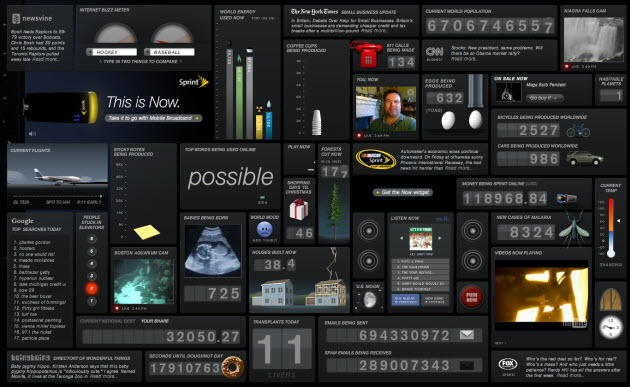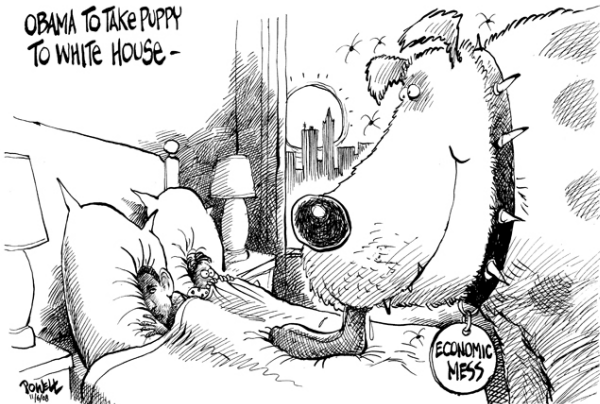Watching the 500-point down day following Obama's election,
it would be easy to attribute the move to a reaction to the vote. However,
virtually every market
around the globe suffered the same fate.
When I first started trading I used to say things like, "I wonder what
they're going to do in the morning?" Or, "Wow, they are really trying
to mess with people." The point is that I anthropomorphized the market. In
other words, I made the Market seem like a person or a group of people
with consciousness and intent.
It's easy to imagine a
secretive group controlling things behind the scenes. Maybe it's a
select committee from the top investment banks. And of course, you've
heard of the "Plunge Protection Team", who supposedly steps in from
time-to-time, "pressing buttons" and causing markets to dance their
dance.
As appealing as it is to believe that there's so much
order and control underneath our markets, the fact that there's been so
much correlation around the world, both to the downside and the upside,
tells me that what is more likely in control is the fear and greed of
the market's collective participants.
Why is There So Much Fear?
Goldman Sachs forecast
the deepest U.S. recession since the Reagan era after the unemployment
rate climbed to the highest level in 14 years and payrolls tumbled for
a 10th consecutive month. Ultimately, the economy has lost 1.2 million
jobs since December, with over half of those losses in the last three
months as the problems from the recession accelerate.
On a related note, according to the WSJ, Goldman Sachs is approaching the share price it went public close to a decade ago.

While US equities market has been down recently, international markets had it worse. The fact that China just announced a 4 trillion Yuan ($586 billion) stimulus package — equivalent to nearly one-fifth of 2007 GDP
— underlines how nervous Beijing is at the speed of its economic
slowdown.
And in Japan, the Nikkei hit a 26-year low a week ago (click to view chart). Forget about the lost decade, in Japan it has been the lost quarter century.
The
Nikkei has lost more than 20% of its value in the last month and is
down by more than 40% for the year, capped by a 9.6% one-day loss a
week ago. That put it lower than it was back in October 1982.
Yes,
they have yo-yos in Japan too. The Nikkei rallied 33% in 6 days this
week, only to tank again. As you can see, it is a small world.








